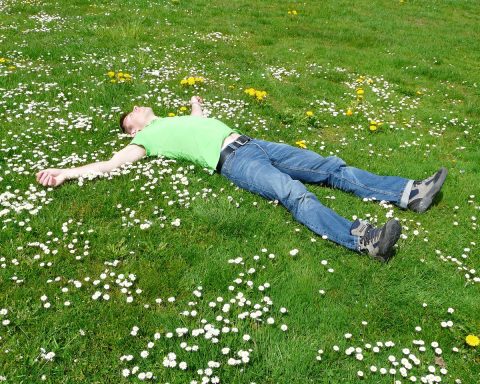Section 1: Introduction
Due to the rise in temperature, many people go streams, lakes, and pools to cool off in the summer. Swimming in the pool is one of the most popular summertime activities. People are not even aware of the risk of waterborne viruses, bacteria, and parasites lurking in the water.
However, as much fun as swimming can be, dangerous bacteria in the pool can make you sick. It is essential to know the risks in water and how to protect yourself this summer.
Section 2: Basics
Section 2.1: Overview of swimming
Swimming is the act of driving our body through water and resisting drowning by moving our hands and feet. Children who have swimming pools at their homes have been shown to have more persuasive swimming skills. This allows them to be safer in the water, helping kids to learn valuable social skills.
Section 2.2: Reasons why you should go for swimming this summer
- Makes you smarter
Studies showed that blood flow to the brain increased by up to 14% when men submerged themselves in water up to their hearts. The pressure on the chest cavity caused by being in the water is the reason why more blood flows to the brain. This process makes your mind more productive.
Normally exercise makes one feel better, happier, and sharper. Therefore, a swim in the morning can help your productivity for the day.
- It’s fun
Whether you’re swimming with kids, in leisure time or during holidays, it is enjoyable. You can even swim with your friend or spouse and catch up on old times. Swimming gives you that feeling of freedom.
- It’s a lifesaving skill
This is one of the best reasons for you to go swimming. By swimming regularly, whether, for fitness or pleasure, you keep the skill fresh in your mind. You might not even realize it, but every time you swim, your muscle strengthens and becomes strong.
Section 3: Techniques/tips to improve
Section 3.1: Tips to avoid getting sick
- Shower before and after swimming
Most people don’t even know that they’re supposed before and after swimming. Hand washing is also important to make sure you don’t swallow any germs from your hand.
Dr. Rehm advised that “it’s good to shower and clean off afterward”. She also said that one should pay careful attention to hand-washing because any bacteria on the hand can end up being swallowed.
- Take breaks every hour
Remember to take your children for bathroom breaks and change diapers frequently when the need arises. You or your children should not go into the water if you have diarrhea.
Dr. Rehm also suggested taking bathroom breaks every 60 minutes and taking children to the bathroom every 30 minutes to check the pants and diaper.
- Don’t swallow pool water
Swallowing even a little quantity of water can make you sick. In pools, it is important to note that chlorine doesn’t kill germs instantly. Some germs can survive these chemicals.
- Check the weather
Many people don’t pay attention to the weather and how it affects bacteria levels in lakes, rivers, and streams. Avoid swimming on warmer days as it can cause bacteria to be higher in the water. Water after heavy rain or floods has a higher probability of being contaminated.
- Don’t swim with open wounds
Open wounds can increase the risk of contracting an illness. Wait until your wound is completely healed before you enter the pool.
- Don’t poo or whiz in the water
Kids often have problems with this rule, so they need some help. It is inconsiderate and wrong for an adult to do this. Be mindful that chlorine does not sanitize the pool immediately. If you witness an incident in the pool, call the attention of pool staff.
Section 3.2: Signs and symptoms to look for
- Flu-like symptoms
- Ear pain
- Shortness of breath
- Stomach cramps
- Nausea and vomiting
- Watery diarrhea
- Cough
- Fevers
Section 4: Correcting common problems
Pools and lakes are full of germs that can make you sick. Some of the common issues you can get from swimming in a pool or lake are diarrhea, skin rashes, respiratory illness, and swimmer’s ear. These illnesses are contracted when one accidentally ingests contaminated water. Here are some ways to correct these problems:
- Stomach issues due to diarrheal illness
Symptoms of stomach issues include cramping, bloody stool, cramping, vomiting, fever, diarrhea, and dehydration. The best way to prevent this is to avoid swallowing pool water.
If you suspect those symptoms, it is better to consult a doctor to avoid further complications.
- Skin irritation “hot tub rash.”
Hot tub rash often appears after one has been in a contaminated hot tub or spa. It sometimes shows up after swimming in a poorly treated heated pool. Possible symptoms include red, itchy bumps or small pus-filled blisters.
To prevent this, avoid shaving or waxing before taking a dip. It is ideal to always wash with soap and water and dry yourself properly after being in a hot tub or pool. Your doctor might prescribe an anti-itch cream and anti-bacterial cream for you.
- Ear irritation after a swim
Swimmer’s ear is an infection in the outer ear canal. Symptoms include red, itching, painful, or swollen ears. To prevent this, try swimming earplugs if your child is prone to swimmer’s ear.
After swimming, tip the head to drain water from the ear canal, and always dry ears with a towel. If it persists, call your doctor to prescribe antibiotics or ear drops for you.
Section 5: Analysis of Best practices in the Industry
- The Model Aquatic Health Code, also known by the Recreational Aquatic Industry as MAHC for short, is a code created to enable local and state Governments to make swimming pools and aquatic facilities safer.
- MAHC was developed and maintained under the direction of the United States Centre for Disease Control and prevention, known by many as the CDC.
- The CDC created this model pool code in cooperation with public health officials, recreational water system operators, academics, and those who provide products and services to the pool industry.
- The need for a model code based on science and best practices is imperative as it protects bathers and swimmers from drowning, injury, illness, waterborne pathogens, general water contamination, and more.
- The MAHC also includes references to other well-known industry standards.
- This MAHC is vital because this model code helps keep swimmers and bathers safer, whether it’s a community center pool, hot tub, or natural water.
Section 6: Tools you can use
- Swimsuit
- Goggles
- Bathing caps
- Floatation devices
- Water treadmill
- Aqua jogger
- Noodle
- Water dumbbells
- Gloves
- Kickboards
- Fins
- Hand paddles
- Pull buoys








